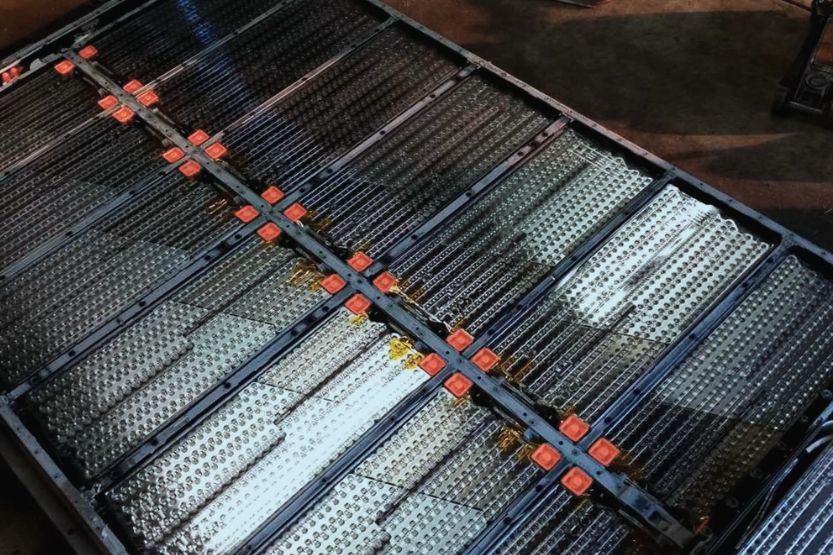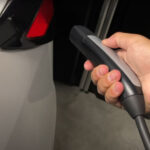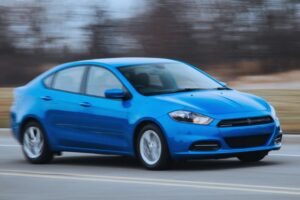Tesla cars can run hundreds of thousands of miles by battery power alone. You would be amazed if you learned the exact number of batteries for each Tesla car model. How many batteries are in a Tesla?
The battery pack of the most common Tesla car has almost 7,104 18650 battery cells separated into 16 444 cell modules. The said batteries can store about 85 kWh of energy. Lately, Tesla engineers reconfigured the battery structure of the pack. Every module now holds 516 cells. That brings the number of batteries to a total of 8,256 cells.
These batteries can last a long time. Generally, the batteries of a Tesla car can last from 300,000 miles to 500,000 miles. This is not surprising because Tesla has been pioneering battery technology and innovation. An Impact Report from Tesla claimed that the Tesla models S and X batteries could retain more than 80% of their range even after running for 200,000 miles.
Read on to learn more about the total number of batteries used in different Tesla car models.
How Many Batteries Are in a Tesla?

In the most popular Tesla car model, the battery pack consists of 7,104 18650 cells divided into 16 444 cell modules.
The 18650 batteries can store approximately 85 kWh of energy. Currently, Tesla engineers are restructuring the pack’s battery structure. Each pack now holds 516 cells, bringing the total number of batteries to 8,256.
Tesla claims these batteries have incredibly long lives and can last from 300,000 to 500,000 miles.
In line with this, Tesla released its Impact Report that claims that Tesla models S and X batteries can retain 80% of their power even after you drive the driving the cars at a distance of 200,000 miles.
Every Tesla car out of their factory comes with two types of batteries of different sizes. There is a bigger battery that powers the powertrain. This battery also takes care of the storing charge that powers the car.
The smaller battery is a 12-volt battery, which energizes the headlights, the air conditioner, the LCD screen, and other electrical devices of the car.
As for the replacement cost, Elon Musk said in 2019 that it would cost from $5,000 to $7,000 to replace the batteries. Every Tesla car model comes with four or five battery modules. So, a complete battery replacement will cost from $20,000 to $35,000.
How Many Batteries Are in a Tesla Model 3?
Uses a Small and a Big Battery
Tesla’s Model 3, a compact sedan, is the best car for you if you have a family of four or five. This car uses a small and a big battery. The smaller battery is a 12-volt battery.
Bigger Battery Uses 2,170 Lithium-ion Cells
Its bigger battery uses 2,170 Lithium-ion cells. The battery packs of a Tesla Model 3 are usually 350 to 400 volts. Each pack contains four longitudinal battery models, and in each pack is where the cell bricks are.
There are two variants of the Tesla Model 3. The sizes of their batteries are different, making their total number of batteries also different along with their different ranges.
Tesla Model 3 Has a Variant with a Standard Range of 272 Miles Maximum
The standard range of a Tesla Model 3 is 272 miles maximum. The car has 2,976 Lithium-ion cells in its battery pack. They are arranged into 96 bricks or groups of 31 each.
Second Variant Can Reach a Maximum Distance of 358 Miles
The second variant of the Tesla Model 3 has a longer range. It can reach a maximum distance of 358 miles with its battery pack consisting of 4,416 Lithium-ion cells. These batteries have 96 groups or bricks, with 46 batteries in each. The total weight of the battery packs is 480 kg.
In 2018, Tesla tried to launch a cheaper and lighter Model 3, with a battery pack that contains 2,170 Lithium-ion cells. Tesla aims to make the Model 3 more affordable to the average car owner.
How Many Batteries Are in a Tesla Model X?
Tesla Model X is an All-wheel Drive Model
The Tesla Model X is an all-wheel drive model, also an SUV. It is for those looking for a car that offers performance and utility. The Model X can climb steep hills and can handle challenging road conditions.
Equipped with a Huge Battery Pack
Tesla equipped the Model X with a huge battery pack to provide this performance. Initially, the Tesla Model X was available in three trims:
- Trim 1: 60 kWh Lithium-ion batteries,
- Trim 2: 75 kWh, and
- Trim 3: 90 kWh.
Tesla Model X with the 100 kWh Is the Only Available Model in the Market
Eventually, Tesla discontinued the production of these three variants. The company settled for the Tesla Model X with the 100 kWh variant. This is the only available Model X in the market today.
Has 8,256 Lithium-ion Cells Allowing Tesla Model X to Travel 300 to 351 Miles
There are 18650 type lithium-ion cells in the Model X. The configuration is 516 cells in each of the 16 modules, and all these batteries are wired in series. With this arrangement, the total number of Lithium-ion cells is 8,256.
With this vast number of battery cells, the Tesla Model X can travel from 300 to 351 miles per charge at a maximum speed of 155 miles per hour.
How Many Batteries Are in a Tesla Model Y?
Comes with a Huge Battery Pack
Tesla made another all-wheel drive, the Tesla Model Y. It’s different from the Model X because it has more luxurious appointments and offers incredible performance on different slopes and landscapes. That’s why this SUV also comes with a huge battery pack.
Equipped with a Battery Pack Containing 2,170 Lithium-ion cells
The total number of Lithium-ion cells in its battery pack is 2,170. This total is much higher than the one with the 18650 type batteries installed in the Model X. Being bigger, this battery pack is, therefore, more capable.
Bigger Battery Size Means More Power
Its bigger size enables it to store more charge to power this larger all-wheel drive SUV. Tesla Model Y uses another battery type, the 4680 Lithium-ion battery. These battery cells are much bigger than the 18650 type.
That is why the battery pack made up of 4680-type batteries needs fewer numbers of cells. As such, there are less than 900 lithium-ion cells in a 4680-type battery that powers the Tesla Model Y.
How Many Batteries Are in a Tesla Model S?
If you want a luxurious sedan in the stable of Tesla, you need to think about the Tesla Model S. Being more upscale; its price is much higher than the Tesla Model 3. This Tesla model is also available in several variants with batteries of different sizes and numbers.
There are 16 battery modules in the Model S. The batteries are the 18650 Lithium-ion cells. A central bus in the battery pack connects every battery module with a contactor. This contactor feeds electricity to the car’s front and rear electric motors.
All in all, there are 7,104 battery cells in the battery modules of the Model S. They are connected in series. Two battery modules are stacked at the front, and 14 modules are in the flat section.
Every module consists of 6 groups that contain 74 cells that are connected in parallel. The six groups are then connected in series within the module.
How Many Batteries Are in a Tesla Model S Plaid

Built for Speed
There’s another Tesla car that you should know. It is the Tesla Model S Plaid. It’s built for speed; that is why it is called ‘Plaid’ in reference to the space parody movie “Spaceballs.” This car has an unbelievable 1,020 hp.
Tesla even claims it can deliver 1,000 hp as the car reaches its maximum speed of 200 miles per hour.
Lighter Than Standard Model S
To provide that incredible power, the car must have many batteries. This massive power enables this car to push the air in front so it can pass through without difficulty. While it weighs 4,828 pounds, it is still 175 pounds lighter than the standard Model S.
Contains Five Modules
Another thing that differentiates the Plaid from the Model S is the number of battery modules. The Plaid only has five modules, while Model S has 16. With fewer battery modules, it is weight is also lighter.
Equipped with 7,920 Lithium-ion Cells
The battery pack of this car has a capacity of 99 kWh. Its batteries are of the 18650 type Lithium-ion batteries. They were sourced from Panasonic, the designer, and manufacturer of the batteries.
Inside the battery pack are 7,920 Lithium-ion cells. They are arranged in five modules, with each module containing 1,584 cells. The height of each battery cell is 65 mm, and the diameter of 18 mm. They are arranged in 22 parallel rows. The battery system of the Model S runs at 450 volts.
Can Deliver a Maximum Distance of 390 to 396 Miles per Charge
The vast number of battery cells in the Model S Plaid enables it to reach a maximum distance of 390 to 396 miles per charge. With this great range, the driver of a Model S Plaid can travel luxuriously for great distances and at higher speeds.
Plaid Has Lighter Battery Pack But with Higher Energy Density Than Model S
Tesla could pack more energy into the Plaid by reducing the quantity of the modules that make up its battery pack. There are only five modules in the Plaid compared to the 16 in the Model S.
This allowed Tesla to make a battery pack that is lighter but with higher energy density and more active anode material.
Again, how many batteries are in a Tesla? The famous Tesla battery pack has around 7,104 18650 cells divided into 16 444 cell modules, which can store about 85 kWh of energy. Tesla engineers reconfigured the pack. Now, it can hold 516 cells in each module, with a total of 8,256 cells.
What Can Go Wrong with a Tesla Battery Pack?
Certain conditions can cause a Tesla battery pack to fail. Some of these conditions include:
- Voltage problems
- Fuse problems
- Other minor issues
If there is an issue with one of the battery modules, it will affect the whole battery pack. As in all-electric cars, the voltage in all the battery modules must be constant in a Tesla car.
If there is any voltage difference across the battery modules, the whole battery pack will develop issues. It won’t function properly or may not function at all. If this happens, Tesla recommends that the owner bring the vehicle to Tesla directly.
The tech staff at Tesla will not replace the module. They will remove it from the ailing car and send it to their factory for repair or overhaul. And then, they will install a new or refurbished battery pack on the vehicle.
How Much Does It Cost to Replace a Tesla Battery
The cost of replacing a Tesla battery will depend on the required parts and labor. On average, the cost of the basic battery replacement of a Tesla car runs from $13,000 to $14,000. If you own a Model S, you could spend between $13,000 and $20,000 to replace its batteries.
The cost of replacing the battery of an entry-level Model 3 can run to about $13,000. For a Model X SUV, battery replacement can cost around $14,000. Aside from the battery, you must pay for the parts and labor.
So be ready to spend from $20 to $200 for replacement parts such as connectors and wirings. For labor, they may charge you around $175 per hour. If the repair process becomes complicated, they may even add some more charges.
Frequently Asked Questions – How Many Batteries Are in a Tesla?

Here are the most often asked questions about Tesla batteries. If you still have some questions about this topic, just read on. It may include the answer to your particular question:
How Many Batteries Are There in a Tesla Car?
There are many electric car models that Tesla manufactures. Each of the Tesla car models has its particular battery configuration. On average, the battery pack of a Tesla car consists of almost 7,104 Lithium-ion cells of the 18650 type.
Typically, they are separated into 16 444 cell modules. The 18650-type batteries can store approximately 85 kWh of electricity.
Lately, the engineers of Tesla rearranged the structure of its battery pack. Now a battery pack holds 516 cells in every module. That brings up the total number of batteries to 8,256.
How Many Batteries Are There in the Tesla Model 3?
Tesla Model 3 has two variants. The first variant has 2,976 Lithium-ion cells in its battery pack. They are arranged into 96 bricks or groups of 31 each.
The second variant has 4,416 Lithium-ion cells. These batteries are divided into 96 groups or bricks, with 46 batteries in each. The total weight of the battery pack is 480 kg.
Tesla has tried to make its Model 3 lighter and cheaper. So, in 2018, the electric car manufacturer launched a cheaper Model 3. Its battery pack consists of only 2,170 Lithium-ion cells. This electric car is now more affordable to the average car buyer.
How Long Does a Tesla Battery Pack Last?
On average, the typical battery pack of Tesla cars can last from 300,000 to 500,000 miles. Based on Tesla’s Impact Report, the Tesla Model S and X battery packs can retain 80% of their range even after the car has been driven 200,000 miles.
How Much Is a Tesla Battery Pack Replacement?
The actual cost of a Tesla battery replacement depends on the needed parts and labor. Typically, for a basic battery replacement, the cost can range from $13,000 to $14,000. For a Tesla Model X, the cost of replacing the battery pack is approximately $14,000.
But apart from the battery, you should prepare to pay for additional charges that will come from the required parts and labor. The cost of that can be somewhere between $20 and $200.
What Can Cause a Tesla Battery Pack to Fail?
Certain conditions can make a Tesla battery pack malfunction. Those conditions are the following:
- Voltage problems
- Fuse problems
- Other minor issues
The entire battery pack will be adversely affected even if just one of the battery modules begins to malfunction. As in all-electric cars, the voltage flowing through a Tesla car should always be constant. If not, there will be problems in the operation of the vehicle.
What Happens If the Battery Pack in My Tesla Car Fails?
You should contact Tesla immediately if the battery pack of your Tesla car experiences problems. If your Tesla car is still under warranty, the tech staff at Tesla will remove the battery from your vehicle and replace it with a new battery pack or a refurbished one.
Even if your car is no longer under warranty, you should still contact Tesla to have it replaced.
In Closing: Batteries in a Tesla Car – How Many?
A standard Tesla car has 7,104 18650 battery cells divided into 16 444 cell modules. The 18650 batteries can store approximately 85 kWh of energy.
Lately, Tesla engineers reorganized the battery structure of the pack. Each module is now composed of 516 cells. The total number of batteries is now 8,256 cells.
These batteries have incredibly long lives. Tesla claims that, generally, they can last from 300,000 miles to 500,000 miles.
Tesla has also released its Impact Report claiming that the batteries used in Tesla Model S and Model X can retain more than 80% of their range even after running for 200,000 miles.
Read next:
Cybertruck vs. F150 – How Does the Tesla vs Ford Truck Compare?









